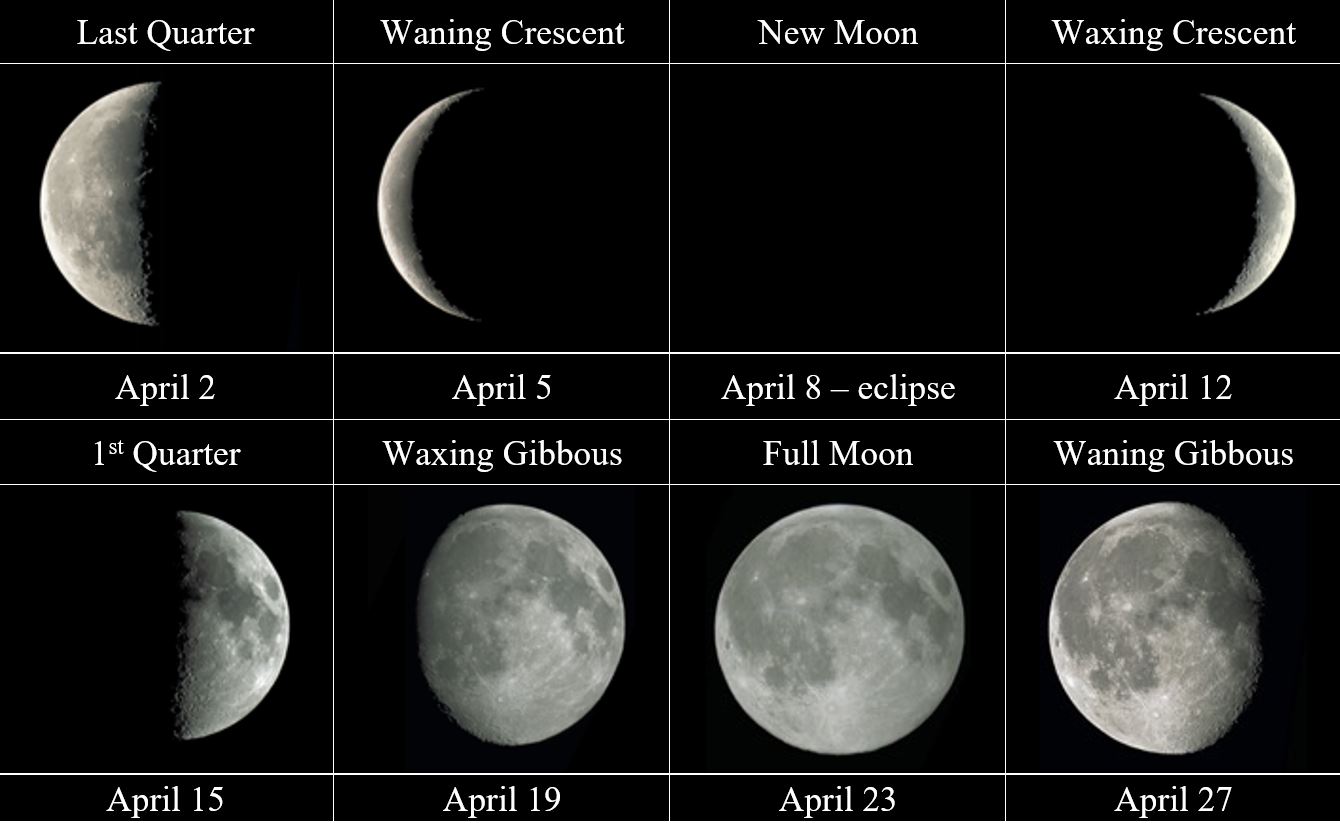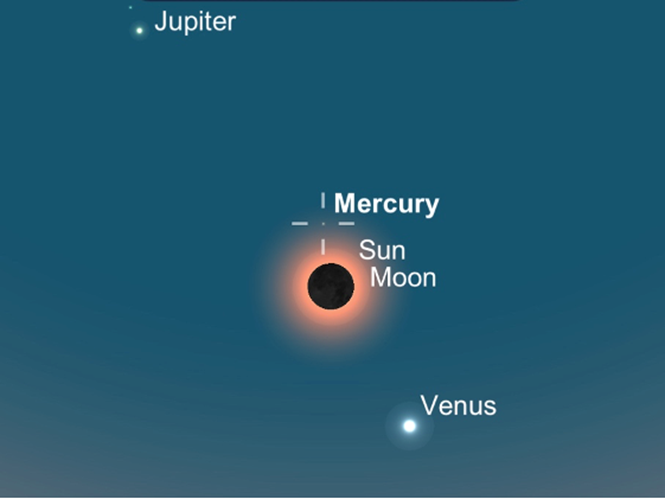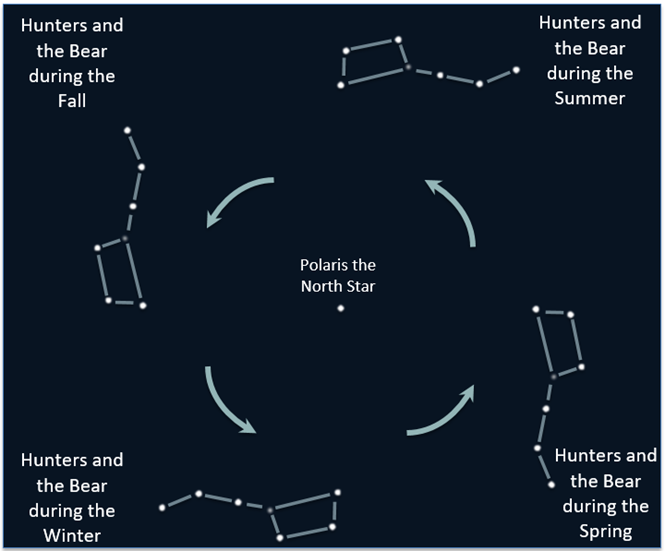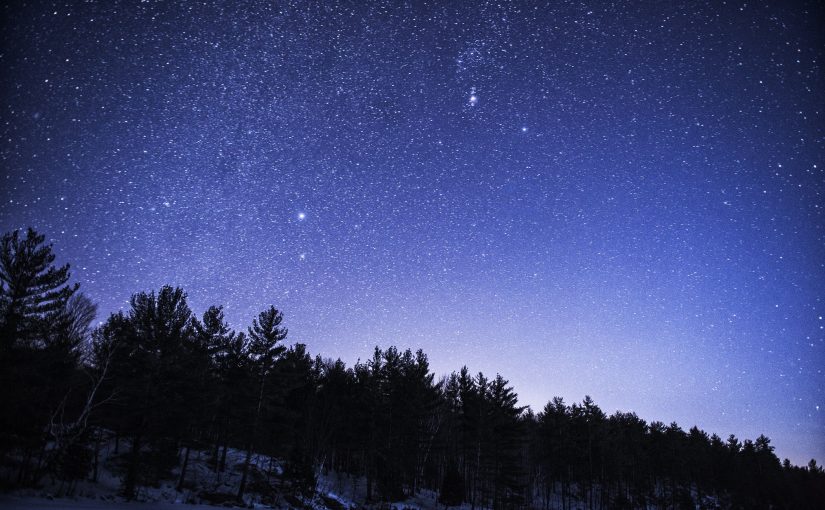Welcome to the Ontario Parks “Eyes on the Skies” series. This space (see what we did there?) will cover a wide range of astronomy topics with a focus on what can be seen from the pristine skies found in our provincial parks.
For those of us in Ontario, April is that transition month between winter and spring weather. The snows start to melt away, the lakes start to open up and, by month’s end, the first buds may appear on the trees.
On April 8 in the mid-afternoon, a rare astronomical event will occur for observers in Ontario: a total solar eclipse. If the eclipse will overlap with your visit to parks, please refer to this blog.
Here are our astronomical highlights for April 2024:
The sun

Above you can see the moon in front of the sun during a total solar eclipse.
The white cloudy area is known as the corona and is the outmost layer of the sun’s atmosphere (normally too dim to see against the painfully brighter regions of the sun).
The reddish area emanates from the chromosphere, the second outermost layer and is highly reddish due to the light given off by hydrogen electrons. The reddish light shines through valleys and craters on the moon and is known as Baily’s Beads.
Sunrise and sunset times:
| April 1 | April 15 | April 30 | |
| Sunrise | 7:04 a.m. | 6:38 a.m. | 6:13 a.m. |
| Midday | 1:29 p.m. | 1:25 p.m. | 1:23 p.m. |
| Sunset | 7:55 p.m. | 8:14 p.m. | 8:33 p.m. |
Total solar eclipse
On April 8, the new moon will pass directly in front of the dun (it doesn’t do this very often as its orbit around the Earth is tilted from that of the apparent sun travelling around the Earth).
For those in certain areas of the province, a total solar eclipse will occur.
To learn more about this exciting event, please check out our two posts here:
The moon
The moon has long captivated observers of all ages. April’s lunar phases of the moon occur as follows:

Did you know that many First Nations teachings, including those of the Anishinaabe and the Haudenosaunee people, use the back of a turtle’s shell as a lunar calendar?
The planets — Jupiter
Jupiter is now low in the western sky at sunset and by month’s end sets just after the sun. This December, Jupiter will once again dominate the late night sky for one of its best appearances for the next 12 years!

All the other major planets are near the sun, meaning that if you are in the path of totality during the total solar eclipse on April 8, the sky may get dark enough to allow you to see the brighter of these planets!
Comets and meteor showers
April brings us the first decent meteor shower since April – the Lyrids (originating from the constellation of Lyra the Harp).
While not as spectacular as the more famous Perseids and Geminids, the shower can easily provide up to 20 meteors an hour when seen best from a dark sky site and after 1:00 a.m. on April 21 into April 22. However, the nearly full Moon will light up the skies making all but the brightest meteors nearly impossible to see.
On any given night in the dark skies of provincial parks, you could see as many as five to 10 meteors per hour, especially after midnight.
Featured constellations: the Bears and a Dragon
In last month’s blog, we discussed some of the constellations that are prominent in the spring: Leo the Lion, Cancer the Crab, and Coma Berenices (Queen Berenice of Egypt’s hair).
This month, we will focus on two of the most well-known, as well as one of the longest, constellations visible in the night sky: Ursa Major, the Great Bear (Big Dipper) and Ursa Minor, the Little Bear (Little Dipper).

Find more information on this month’s constellations.

